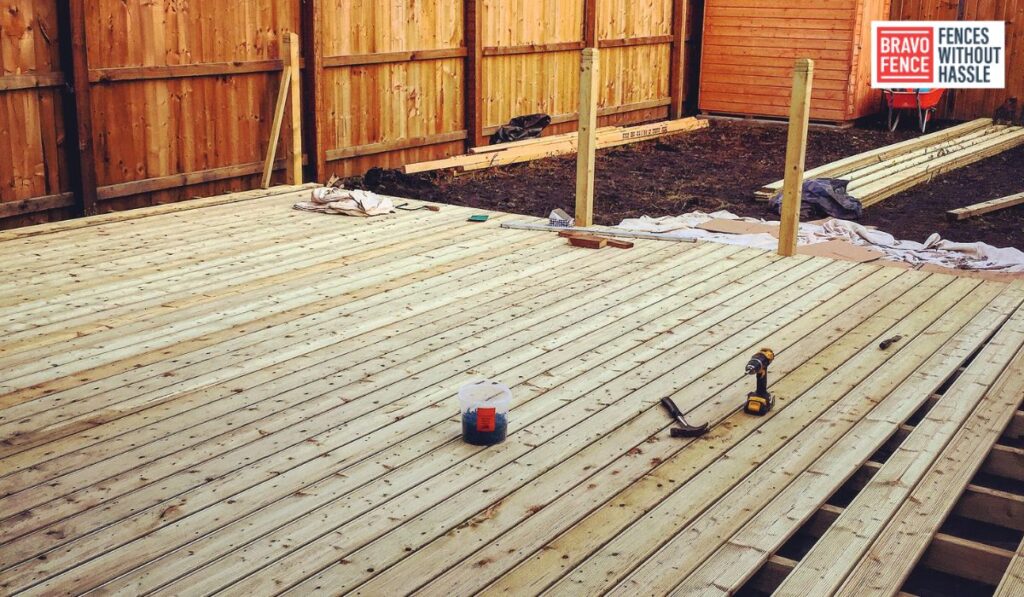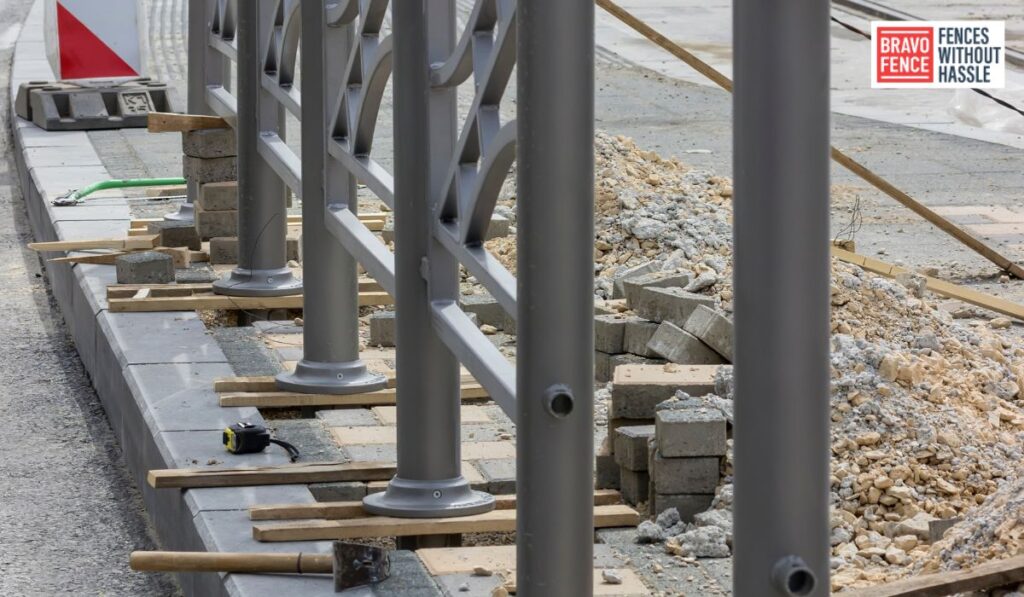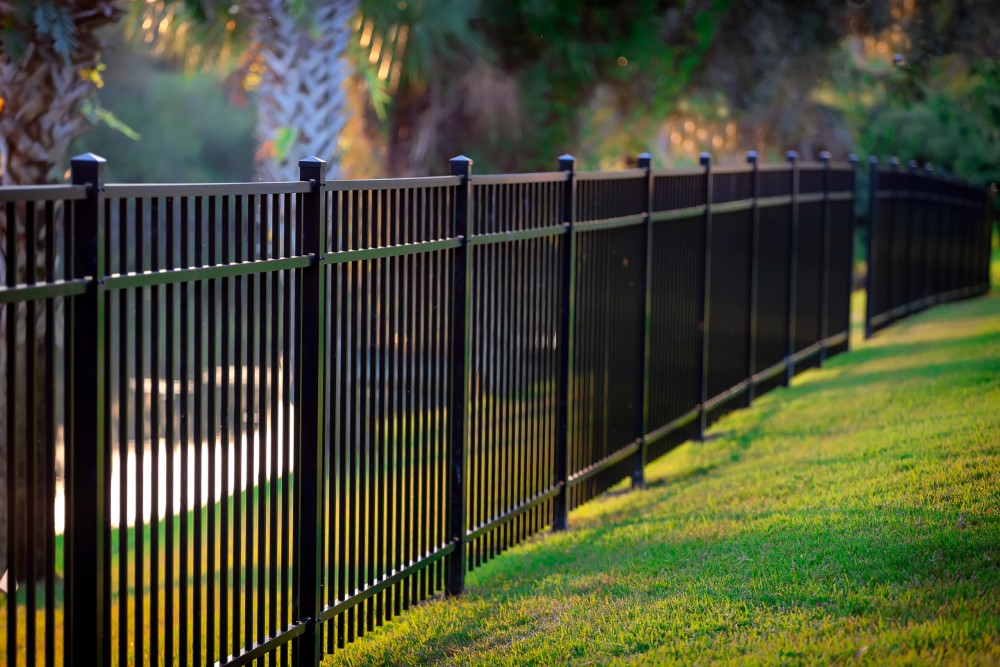
5 Common Fence Installation Mistakes to Avoid
Fence installation is an essential step in securing and defining your property. However, it’s crucial to avoid common mistakes that can lead to costly repairs, compromised security, or unsatisfactory results. This article will discuss the most prevalent fence installation mistakes and provide valuable insights to help you avoid them. Whether you’re a DIY enthusiast or planning to hire a professional, understanding these mistakes will ensure a successful and durable fence installation.
Mistake 1: Inadequate Planning and Research
Before starting any fence installation project, thorough planning and research are essential. Many homeowners must consider crucial factors such as local regulations, property boundaries, and utility lines to avoid jumping into the process. These aspects are necessary to avert encountering legal issues or damaging underground utilities. Take the time to understand your property’s limitations and seek the required permits or approvals to avoid complications.
Mistake 2: Incorrect Measurement and Layout
Accurate measurements are vital for a well-designed and adequately fitting fence. Failing to measure correctly can result in too short or too long sections, leading to an uneven and unappealing appearance. Calculating your property’s perimeter precisely is crucial, factoring in any slopes or irregularities. Remember, “measure twice, cut once” is a golden rule in fence installation.
Mistake 3: Poor Post Hole Placement and Depth

The placement and depth of your fence posts are critical for the overall stability and longevity of the fence. One common mistake is not digging the post holes deep enough or placing them at inconsistent intervals. Shallow holes and irregular spacing can weaken the fence’s structure, making it susceptible to leaning or collapsing under pressure. Following the recommended post-hole depth and spacing guidelines are crucial based on the fence type and local weather conditions.
Mistake 4: Insufficient Post Support
Proper support for fence posts is essential to ensure the fence remains sturdy and durable. Inadequate support is a common mistake that leads to the wall’s leaning, sagging, or even complete failure. Using the wrong type of support, such as flimsy brackets or weak concrete mixtures, can compromise the entire installation. It’s crucial to choose sturdy post supports that are appropriate for your fence type and soil conditions. Additionally, ensure the posts are securely anchored and adequately aligned during installation.
Mistake 5: Neglecting Regular Maintenance
Once the fence is installed, many homeowners overlook the importance of regular maintenance. Neglecting proper care can result in premature wear, damage, or even the need for a complete replacement. Regularly inspect your fence for signs of damage, such as loose boards, rusted hardware, or rotting wood. Addressing these issues promptly will help maintain the fence’s integrity and prolong its lifespan. Additionally, periodic cleaning and resealing (if applicable) can enhance the fence’s appearance and protect it from weather elements.
FAQs
Q: How do I ensure accurate measurements for my fence installation?
Accurate measurements are vital for a successful fence installation. Start by establishing your property boundaries and use measuring tools like tape or laser. Consider any slopes or terrain irregularities that may affect the fence layout. Double-check measurements and seek professional guidance if needed.
Q: What type of fence is best for withstanding harsh weather conditions?
Fences made of durable materials like vinyl, aluminum, or wrought iron tend to withstand harsh weather conditions well. These materials are resistant to rot, corrosion, and warping. Consider the climate in your area and choose a fence material known for its durability in challenging weather.
Q: How can I prevent my fence from leaning or sagging over time?
Proper post placement and support are crucial to preventing fence leaning or sagging. Ensure that the post ditch is deep enough and the posts are securely anchored. Consider using concrete or gravel to provide additional stability. Inspect the fence for any signs of leaning or sagging and promptly address them.
Q: What permits or regulations should I consider before installing a fence?
Before installing a fence, research local permits and regulations. Contact your local municipality or homeowners association to determine if there are any restrictions or guidelines you need to follow. Obtaining the necessary licenses and adhering to regulations will help you avoid legal issues & ensure a compliant installation.

Q: How do I choose the right gate for my fence?
When choosing a gate for your fence, consider factors such as functionality, aesthetics, and security. Determine the purpose of the gate, whether it’s for pedestrian access or accommodating vehicles. Assess the design and style that complements your fence. Additionally, prioritize gate security features like locks or latches for enhanced safety.
Q: How should I prepare the ground for fence installation?
Preparing the ground properly is crucial for a stable and long-lasting fence. Clear the area of debris, rocks, or vegetation that may interfere with the installation. Level the ground if necessary, and mark the fence layout using stakes and string. Consider any slopes or terrain changes that may require fence design adjustments.
Q: How long does it typically take to install a fence?
The duration of fence installation varies depending on factors such as the size of the project, the type of fence, and the level of expertise. Simple structures may take a few days, while more complex projects can span several weeks. Consult a professional installer or contractor for a more accurate estimate for your project.
Q: What are the signs of poor-quality fence materials?
Poor-quality fence materials may exhibit premature decay, warping, or discoloration. Look for visible damage, such as cracks, splintering, or rusting. These signs indicate subpar materials that may not withstand environmental factors or provide the desired longevity. Investing in high-quality materials ensures a durable and visually appealing fence.
Q: Can I install a fence on uneven terrain?
Yes, it’s possible to install a fence on uneven terrain. In such cases, customized installation techniques may be required. Adjustable fence panels or stepped installation methods can accommodate slopes and uneven ground. Consider consulting with an expert installer to ensure a proper installation on rough terrain.
Q: How can I enhance the security of my fence?
Consider adding features such as locked gates, security cameras, or motion sensor lighting to enhance fence security. Opt for sturdy materials and designs that deter climbing or breaching attempts. Additionally, ensure the fence is installed correctly, with secure post placement and reliable locking mechanisms.
Q: What are the cost considerations for fence installation?
Factors affecting the fence installation cost include materials, labor, length, and complexity. Different materials have varying price ranges, with options like chain link being more affordable and materials like wrought iron being more expensive. Additionally, custom designs or specific installation requirements can increase the overall cost. It’s advisable to obtain multiple quotes and compare prices before deciding.
Q: How often should I inspect my fence for damage or wear?
Regular inspections are crucial for maintaining a fence’s condition. Aim to inspect your wall at least once a year, but increase the frequency if you live in an area with severe weather conditions or have pets that may cause damage. Look for signs of rot, rust, warping, lose boards, or any other damage that may compromise the fence’s integrity.
Q: Can I install a fence or hire a professional?
The decision to install a fence yourself or hire an expert depends on your skill level, available time, and the project’s complexity. Simple installations with basic materials may be suitable for DIY, but more complex tasks or specialized materials may require professional expertise. Assess your capabilities and consult with experts to make an informed decision.
Q: What are the benefits of adding a trellis or decorative elements to a fence?
Adding a trellis or decorative elements to a fence enhances its visual appeal and functionality. A framework can support climbing plants, adding a natural and vibrant touch to the wall. Decorative elements like finials or ornamental designs can create a personalized and unique aesthetic. Additionally, these additions can offer privacy, shade, or wind protection.
Q: How do I maintain the color and appearance of a painted or stained fence?
Regular maintenance is necessary to maintain the color and appearance of a painted or stained fence. Clean the wall periodically to remove dirt, grime, and mildew. Touch up any chipped or faded paint/stain as needed. Consider applying a protective sealant or coating to enhance durability and prevent color fading due to exposure to the elements.
Q: Can I install a fence on my property line or stay within my property boundaries?
Installing a fence on your property line is generally recommended to avoid potential disputes with neighbors. However, it’s essential to verify the exact boundaries of your property before installation. Consult your property survey or hire a professional surveyor to ensure the fence is installed within your legal property boundaries.
Q: How do I prevent pests from damaging my fence?
To prevent pests from damaging your fence:
- Take proactive measures such as removing potential food sources or nesting sites near the wall.
- Trim vegetation and bushes that may attract pests.
- Consider using pest deterrents like ultrasonic devices, natural repellents, or barriers.
- Regularly inspect the fence for signs of pest activity and address any infestations promptly.
Q: What are the alternative options for fencing materials?
There are various alternative options for fencing materials, each with its unique features and benefits. Some popular alternatives include vinyl, composite, bamboo, metal (such as aluminum or steel), and natural materials like stone or living hedges. Research different materials, considering factors such as durability, maintenance requirements, and aesthetic appeal, to choose the option that best suits your needs & preferences.
Conclusion
Avoiding common fence installation mistakes is crucial to achieving a successful and long-lasting result. Proper planning, accurate measurements, adequate support, and regular maintenance ensure your fence serves its intended purpose for years. Conduct thorough research, consult professionals when needed, and adhere to local regulations and guidelines. With the right approach and attention to detail, your fence installation project will be a rewarding and satisfying experience.
Tags: Explore Helpful Resources on Accurate Measurements For My Fence Installation, Explore Helpful Resources on Prepare The Ground For Fence Installation, Explore Helpful Resources on Type Of Fence Is Best For Withstanding Harsh Weather Conditions, Inspiration and Tips on Choose The Right Gate For My Fence
